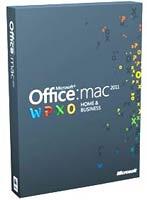Explore differences and similarities between Microsoft 365 and desktop versions of Microsoft Office. The programs may appear similar, but there's a big difference.
Author: Geetesh Bajaj
Product/Version: PowerPoint
OS: Microsoft Windows and Mac OS X
Microsoft 365 is the new name for what was previously known as Office 365, and this is largely true. There are exceptions, and some offerings continue to be branded as Office 365. So, Office 365 is not dead and nowadays both brands, Microsoft 365 and Ofice 365 exist. We discuss these brands in more detail in our Microsoft 365 Versions page.
However, you may have also heard about their other different, but still similar product offerings such as Microsoft Office 2021, Office 2019, or other versions for the desktop, for both Windows and Mac. Are desktop versions the same as Microsoft 365? Well, there is no straight yes or no answer! But it does matter because many people can’t understand where the distinctions are. Let's first find out what’s confusing with all this terminology:
Is Microsoft 365 the name of a web site? Or is it also a subscription-based product? If it is a subscription, is it for using online applications? Or does the subscription allow you to install and run standalone Office apps that can be run on your desktop machines? Or even phones and tablets? Or is this some online storage stuff that is called a cloud these days? Or is Microsoft 365 all of these?
This seems less complicated. Isn’t this the desktop version of Microsoft's Office suite that includes familiar programs such as Word, Excel, PowerPoint, Outlook, etc? Then why do you see Microsoft 365 or Office 365 mentioned everywhere on Microsoft's web site—even on the pages for Microsoft Office? Is there a connection?
Yes, this is the Mac version of Office, but the Office for Mac pages on Microsoft’s site contain so many references to Microsoft 365 or Office 365, and you’ll see that Microsoft 365 includes Office for Mac as well! Will this work on your Mac computer?
If you echo even half the doubts raised in the preceding section, then you are not alone. Nowhere have we found content that describes the distinctions between these different terms well. Maybe the descriptions themselves kept changing as the product lines evolved, and many people were as confused as we were. Clearly, there needs to be a resource explaining these distinctions. That's the reason we decided to create this plain English guide to explain what Microsoft 365 means, and how it relates to desktop versions such as Office 2021, Office 2019, Office 2016, and Office 2013. By the end of this article, we hope you will understand these concepts clearly.
Sometimes, oversimplification can help! Broadly speaking, there are two ways through which you can buy Microsoft Office:
The first of these is how you have bought Office products typically: as a box that contains a product key—or even a product key that you buy online, and then install the product on your computer.
The second way is through a subscription; think of this approach as renting the software.
These are the familiar versions of Microsoft Office that get installed on your computer through an online installation (in some cases, you may get to use an Office install DVD or an ISO file). When you buy these versions, you typically also get a product key that you enter when the installation routine prompts you.
At the time of updating this page, Microsoft Office 2021 is the current version for both Windows and Mac. Office 2019 and 2016 are the older versions for Windows and Mac respectively. Office 2019, 2016, and some older versions still have millions of users who have not upgraded to Office 2021 or Microsoft 365 yet.
There are five types of Office bundles available for Office 2021 for Windows:

There are three types of Office bundles available for Office 2019 for Mac:

 Peter Wu, Principal Software Engineering Manager at Microsoft did make the distinctions between the various perpetual, LTSC, and subscription versions so much easier. Here's what he says:
Peter Wu, Principal Software Engineering Manager at Microsoft did make the distinctions between the various perpetual, LTSC, and subscription versions so much easier. Here's what he says:
Customers of Office Perpetual Licenses on Volume Licensing get builds from the LTSC (Long-Term Servicing Channel). This generally has fewer features than the Microsoft 365 subscription version because
Customers of Office Perpetual Licenses not on Volume Licensing get the same build from the Monthly Channel, Enterprise Monthly Channel, or Semi-Annual Channel that Microsoft 365 subscribers get, but it has fewer features because some of the features are only enabled for a subscription license.
So, to summarize:
Thank you so much for this explanation, Peter.
Additionally, there may be other bundles available for Office from other channels such as MSDN Visual Studio, TechNet, etc. Also, some Office family products including Visio and Project are no longer included in an Office bundle, and you need to buy or license them separately.
Want to get a free or cheaper copy of Microsoft Office? You may be eligible. To find out more, explore our Microsoft Office for Free? page.
In the simplest terms, just think of the 365 suffix for Office as a version of Microsoft Office that never gets outdated. You may be using the perpetual version of Microsoft Office today, but you would not be auto-upgraded to the next desktop version of Office when that is released, or even any interim release that Microsoft rolls out. And you will have to spend more dollars (or any other currency) to get a licensed version of the newer Office! And that’s probably something most of us have been doing for more than a decade already. Microsoft now wants to change our attitude and their revenue by making us all move to a subscription model, where your Office version will never get outdated—that’s what Microsoft 365 is! And now that makes even more sense since Microsoft has a complete roadmap for features in Office that only Microsoft 365 subscribers will get. Do note that Microsoft 365 is often known by its earlier name, Office 365.

Is Microsoft 365 for everyone? Is it affordable? Do you even need it? Those are all valid questions, and let us explore these answers in our Microsoft 365 Versions page.
See Also: Version and License of Microsoft PowerPoint and Office
With such a huge clientele of Microsoft Office users, you'll be surprised to know that many users aren’t aware of which type of Office they are using. While Microsoft 365 is a subscription-based service, the perpetual versions such as Office 2021 are non-subscription versions.
While Windows 11 is an operating system, Microsoft 365 is a suite of programs including Word, Excel, PowerPoint, Outlook, and more that's available as subscription-based product.
This is like comparing apples and oranges. While both are fruits, they taste different. In the same way, while you get the similar suite of Office programs in both options, Microsoft 365 is a continuous subscription purchase while Office 2021 and other similar versions entail a one-time purchase.
01 02 02 - Buying and Installing PowerPoint: Microsoft 365 or Office 2021? (Glossary Page)
You May Also Like: How to Pitch and Win People Round | Microsoft Office for Free?




This is the original page. An AMP (Accelerated Mobile Page) version of this page is also available for those on mobile platforms, at Microsoft 365 or Office 2021?.
Microsoft and the Office logo are trademarks or registered trademarks of Microsoft Corporation in the United States and/or other countries.